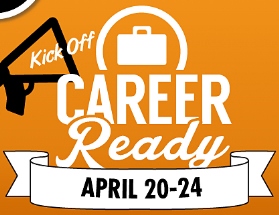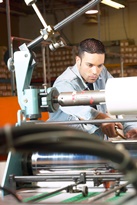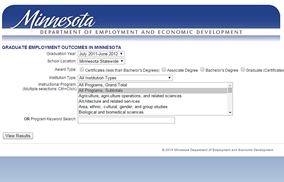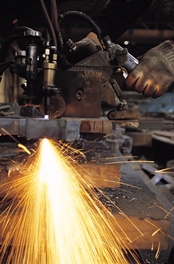
Linda LeCour is the health and wellness manager – North America at Taghleef Industries in Rosedale. I interviewed her about the company’s continued push to enhance the wellness of its staff. (Look for the full story about companies encouraging wellness in the July/August edition of BizVoice.)
Indiana Chamber: What prompted Taghleef Industries’ increased focus on wellness and healthy workplace snacking?
Linda LeCour: We analyzed our claims data to identify the biggest health issues that are contributing to our costs. Around 2010 we really started to pay attention to the numbers and seeing what we could do to move the needle. Our health care costs were going up, our renewal rates were high. Rather than shifting the cost to the employees, there was more and more interest in how an employee’s lifestyle impacts the costs that we incur at work.
IC: What was the process like for making the change to healthier snacking and food sales?
LC: We don’t have any cafeterias in our plants, and we’re a 24/7 operation, our employees work 12-hour shifts. We are 20 minutes away from any restaurants. Up until last summer, we had traditional vending machines. The employees would often refer to them as “Wheels of Death,” because they recognized that the foods in there were not the healthiest choices, but they’re kind of a captive audience when you’re out in the middle of nowhere.
Fox Canteen is our vendor, and I was talking to them about how we could provide healthier choices for our employees. They had implemented a new system at a couple other locations in the Wabash Valley and thought it would be profitable enough for us to do that at Taghleef. It’s called Avenue C. Basically it’s a vending service where everything is out in the open. It’s like going into a convenience store where you can actually open the door, take out the product, and look at the nutrition label, if you want and decide whether or not you want to eat that and put it back if you don’t like it.
IC: What is key to making a change like this work?
LC: Our goal is to treat people like adults and let them make decisions, not necessarily just wipe out any product that’s not within the healthy standard. We’re saying, ‘Here’s your healthier choices, here’s some that aren’t so healthy if you want to incorporate that into your overall food choices for the day.’
IC: Are you starting to see a culture shift?
LC: One day an employee came to me tongue-in-cheek, pointing a finger saying, ‘It’s all your fault. You need to come see what everyone is bringing in for our birthday parties now.’ I went over there and there were fruits and vegetables and healthy foods that people were starting to bring in as a result of education and awareness and realizing people need to have healthy choices.

 Business is good at Subaru of Indiana Automotive, Inc. (SIA) in Lafayette. The plant is expanding, with production of the Impreza set to begin in late 2016.
Business is good at Subaru of Indiana Automotive, Inc. (SIA) in Lafayette. The plant is expanding, with production of the Impreza set to begin in late 2016. Indiana’s Career Ready campaign (formerly KnowHow2GOIndiana) takes place each April through July, with real-world advice and practical experiences to help students prepare for their future careers. Efforts will focus on career sectors that are projected to be in high demand for Indiana’s economy (advanced manufacturing; agriculture, agribusiness and food; healthcare and life sciences; information technology and clean energy technology; and logistics).
Indiana’s Career Ready campaign (formerly KnowHow2GOIndiana) takes place each April through July, with real-world advice and practical experiences to help students prepare for their future careers. Efforts will focus on career sectors that are projected to be in high demand for Indiana’s economy (advanced manufacturing; agriculture, agribusiness and food; healthcare and life sciences; information technology and clean energy technology; and logistics). Educators, employers and community members gathered at the Ivy Tech Muncie campus last week to discuss career and training opportunities in manufacturing and construction at the Postsecondary Pathways event, sponsored by JPMorgan Chase & Co., and co-hosted by the Indiana Youth Institute, CELL, Indiana Department of Workforce Development and the Indiana Chamber.
Educators, employers and community members gathered at the Ivy Tech Muncie campus last week to discuss career and training opportunities in manufacturing and construction at the Postsecondary Pathways event, sponsored by JPMorgan Chase & Co., and co-hosted by the Indiana Youth Institute, CELL, Indiana Department of Workforce Development and the Indiana Chamber. Girls Inc.
Girls Inc.  People in powerful positions often have access to the best information.
People in powerful positions often have access to the best information. “Every dollar spent in manufacturing generates $1.32 for the economy.” – U.S. Chamber
“Every dollar spent in manufacturing generates $1.32 for the economy.” – U.S. Chamber